The restart of travel following the Covid-19 pandemic is a chance to reset tourism over the next several years.
Athens is embracing the opportunity to become a more sustainable destination by rethinking the traditional divide between visitors and locals. Today it’s clear that tourism cannot become sustainable without a sustainable city, and a city cannot become sustainable without sustainable tourism.
The City of Athens and the Athens Development and Destination Management Agency have spent the last several years studying the impact of visitor traffic on residents and the city’s carbon footprint.
These discussions shared with peers and partners throughout the world have generated a new list of criteria for attractive destinations that is topped by quality of life, accessibility, and sustainability.
Travellers seem to agree. They want more from their destination than “authenticity,” the x-factor that defined the Instagram-ready destination before the pandemic. Locals also want more than tourist attractions and seasonal jobs, and city leaders want their destinations to be more inclusive.
Today, everyone wants tourism to contribute more effectively to improve quality of life. Athens is working to incorporate this new outlook into its strategy to attract tourism, talent, and investment. It’s the key to becoming a sustainable city and tourism destination.
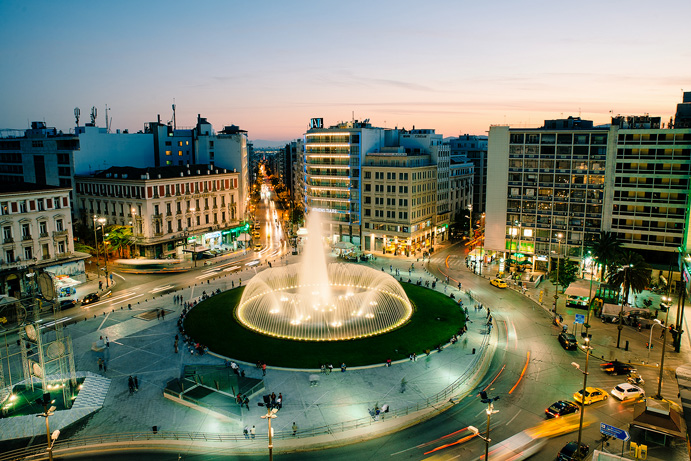
Athens is already known for many great pleasures that have secured the city a permanent place in many dreams and bucket lists. The city has an exceptional climate for every season, secluded beaches just 20 minutes from the city centre and state-of-the-art conference centres. The city has long charmed visitors with its heritage sites, including some of the world’s most recognizable historic monuments.
Athens believes it can continue earning new visitors by becoming sustainable. That strategy begins by turning attention to its urban future and outdoor quality of life that has long been part of the city’s cultural DNA.
Athens is rethinking tourism by investing in infrastructure that promotes and protects the intangible heritage of the city. That means building new partnerships and investing in smart infrastructure, training tourism stakeholders to incorporate sustainability into their business plans, and adding value by encouraging visitors to stay longer in the destination during all seasons of the year.
Athens is no longer simply asking visitors to enjoy Athens. It’s asking visitors and residents to support Athens on its journey toward sustainability.
A New Visitors’ Guide
The Athens Development and Destination Management Agency is helping to lead the tourism industry toward sustainability by promoting a new vision for urban tourism. ADDMA is a publicly owned company supporting the mission of the City of Athens, as well as the city’s destination management organization. ADDMA has helped support cultural institutions in order to maintain their high-quality experiences during the pandemic, and it is also investing in tools to spark product diversification.
The city’s international brand – This is Athens – is leading a dramatic shift of the city’s image as a tourism destination from souvlaki to sustainability. Incorporating sustainable and responsible tourism into its marketing messages helps the city bring visitors along for the ride so that tourism can become an investment in quality of life.
Recent promotional campaigns are designed to attract visitors to the city beyond the Acropolis or to explore its beaches, and to stay longer in the city during the fall and winter months. This is Athens is training visitors to experience the city in new ways, placing historic monuments in their contemporary urban context, and helping to put accessibility and sustainability at the front of the city’s agenda.
Among the bold new leadership tools is the visitors’ portal online at thisisathens.org. Serving as the Official Visitors’ Guide to the City of Athens features new cultural routes and ways to visit unknown areas of the city, unlocking hidden neighbourhood gems, shopping, and stylish delights, as well as profiles of the creative communities re-inventing the city every day.
Designed for visitors abroad and published in English, French, and German, the platform also helps identify best practices for sustainability and highlights them through more than 250 articles and insights written by local journalists, as well as 6500 photos by local photographers, 2000 points of interest, and an events calendar curated with visitors in mind.
The visitors’ guide also showcases businesses that are innovating and upgrading their services, helping businesses to adapt to changes in the visitor economy by promoting product diversification. Local businesses increasingly want to attract locals as well as visitors, a combination that serves a mark of quality and authenticity.
This is Athens is also part of the digital transformation of municipal services that are cutting wait times by simplifying public procedures. The city has created phone apps for services like public parking, and recently begun installing networks of sensors so that municipal resources like waste recycling containers can be more effectively managed and utilized efficiently. The city has also added more than 100 digital services that are now available online, reducing paperwork and dropping the response time from days to seconds.
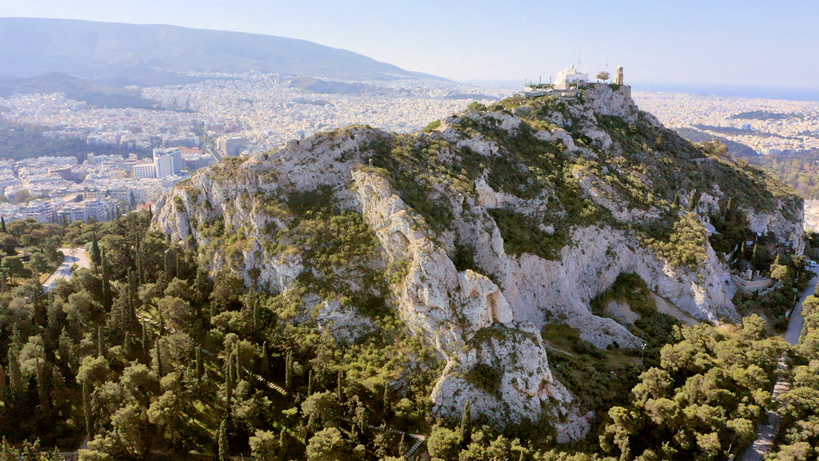
Long-term growth
In 2019, Athens welcomed more travellers than any time in its long and storied history. Arrivals at the Athens International Airport topped 6.4 million, with hundreds of thousands more arriving in cars and cruise ships. That marked a stunning increase on the 2.5 million visitors recorded at the airport just a decade earlier.
In the coming years, Athens wants to continue welcoming as many visitors to the city as it can handle while doing that job better and more sustainably.
Meanwhile, the global competition for long-term visitors is heating up. More travellers are searching for a better work-life balance or bringing their home routines along on holidays. By rethinking the needs of visitors and responding to these changing trends, there are new opportunities to build a more sustainable visitor economy.
The visitor infrastructure in Athens has historically been most intensively utilized only during the summer months, and every October the city has experienced a drop-off in employment and revenue.
Long-term visitors may be part of the solution. Visitors who stay in Athens during the fall and winter help to flatten the summer spike and can help make infrastructure investments more sustainable, creating better long-term jobs and keeping more revenue in the city.
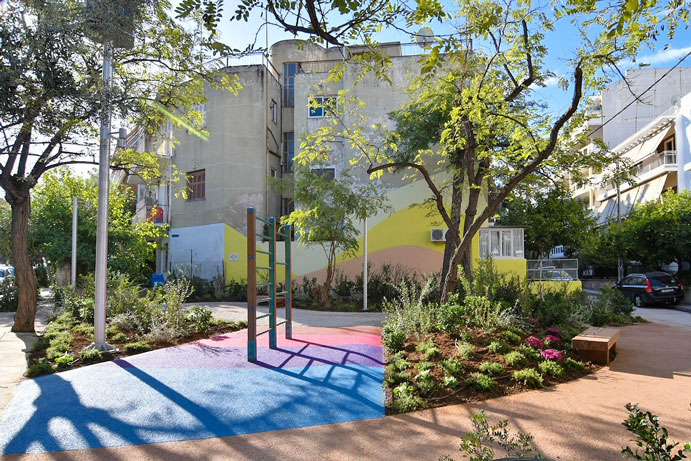
Outdoor Quality of Life
Athens already has one of the most beautiful urban promenades and open-air museums in the world circling below the Acropolis and unifying ancient archaeological sites and museums. The city is also famous for fresh Mediterranean cuisine served at cafes and tavernas that spill out into the street, utilizing public space and the urban outdoors as part of the dining experience.
During the Covid-19 lockdowns, Athenians found new ways to integrate the urban landscape into their routines, bringing the outdoors into their everyday life and making neighbourhood parks and squares part of their homes.
The City of Athens responded by deploying new street cleaning equipment and upgrading maintenance schedules so that all the city’s streets and sidewalks would get a regular washing. Every Sunday the city focuses on a single neighbourhood for a deep cleaning. Enormous efforts by the city and its partners have helped to remove graffiti while reaffirming support for street art.
Fast urban growth during the twentieth century gave Athens many dense neighbourhoods – today the city counts 129 – each of which once had its own commercial centre, professional offices and support networks. Much of life could be lived within a short distance of home, often less than 15 minutes.
Every neighbourhood plays a role in the city’s vision for sustainable tourism. Athens is working to ensure that there are well-maintained parks, cultural institutions, and events in every part of the city, especially in neighbourhoods that historically had less green space.
Athens is working to enhance quality of life and the well-being of residents in order to become a more sustainable and accessible destination. Investments in public space and sidewalks are helping to connect heritage sites to the city’s neighbourhoods, and refreshed squares and parks are protecting everyday life that is lived outdoors during most of the year.
"The principles of sustainability are already in our DNA,” says Athens Mayor Kostas Bakoyannis, highlighting “smart” changes that highlight the unique character and cultural heritage of Athens while also utilizing digital technologies that help the city work better.
The city is creating a network of green spaces of all sizes, from 10 small pocket parks across the city to “green corridors” in Exarcheia and Akadimia Platonos that will utilize the city’s topography to help air pockets move through the streets. These investments extend the existing network of historic parks where there are major restoration projects underway, for instance at Fix Park and the National Gardens.
That’s good news for the visitor economy. New parks and better sidewalks are helping walkers, joggers, bicyclists, and window shoppers to discover new places to go, buy and eat. Tree-lined squares and re-engineered streets are preparing the city for innovations in urban mobility. Visitors can plan their trip to Athens without a daily itinerary, adding more time to wander the city and find a shaded public space to cool off.

A Sustainable Destination
The Athens Development and Destination Management Agency commissioned an assessment of Athens as a sustainable tourism destination. Working in partnership with the Global Sustainable Tourism Council (GSTC), the assessment is designed to help Athens integrate the 17 United Nations Sustainable Development Goals into the city’s holistic strategy for tourism and urban development.
The project utilizes more than 70 on-site evaluations in the neighbourhoods and parks of Athens, as well as public services, museums, archaeological sites and other attractions. It’s also expanding the range of stakeholders who are brought into the conversation about tourism, improving engagement between the municipality and partners across the visitor economy.
The GSTC will also design training sessions for local business owners to share knowledge and create a better understanding of sustainability and how it applies to their daily business practices: How do you separate your garbage? What does it mean for energy efficiency? Such questions are crucial for continued growth in the visitor economy that can intersect and support local conversations about quality of life.
Historic Plans
Investments in green and blue infrastructure are happening everywhere and benefiting everyone. That is a key part of the plan for sustainable growth, builds momentum for the city’s climate action plan.
Athens is the first city to be included in the Natural Capital Finance Facility (NCFF), a financial instrument created by the European Commission and the European Investment Bank to finance projects for climate adaptation using nature-based solutions. Long-planned projects will soon begin to bear fruit.
On Lycabettus Hill, one of the city’s most visible landmarks and a crucial “urban lung,” this new funding will be used to replace asphalt roads with new porous surfaces to prevent water runoff and soil erosion. Biodiversity will be enhanced through new plantings as well as stormwater management and other erosion controls. The restoration project attracted two local universities and international advisors to create tailor-made engagement tools to gain feedback from residents around the hill, a procedure designed to overcome the lack of trust that has prevented the completion of large projects for the city’s infrastructure and services.
Three “Green Corridors” will revitalize busy urban canyons with tree lined streets in areas popular with visitors between the Archaeological Museum and Strefi Hill, and on streets leading to the Archaeological Park of Plato’s Academy.
As part of the "Blue Corridors" strategy, the city has also enhanced historic water fountains that create a cooling spray, while new drinking fountains are being placed at strategic locations around the city.
In Syntagma Square, Athens is implementing designs approved 20 years ago, giving more space to pedestrians, planting trees for cooling shade, and also demonstrating continuity in municipal government.
The next phase calls for continuous walkable corridors that link important green areas and cultural landmarks. These expanded cultural pathways is coming into place between the Temple of Olympian Zeus and the Zappeion gardens and leading toward the all-marble Panathenaic Stadium, the site of the first Modern Olympics and the finish-line of the annual Athens Marathon.
This is part of the city’s strategy that is focused on re-imagining public spaces that have multiple uses, including sustainable mobility, and which are no longer dominated by cars. Streets and sidewalks should be safely used by walkers, window shoppers, joggers, and bicyclists, to reduce greenhouse emissions and support the quality of daily life for everyone.
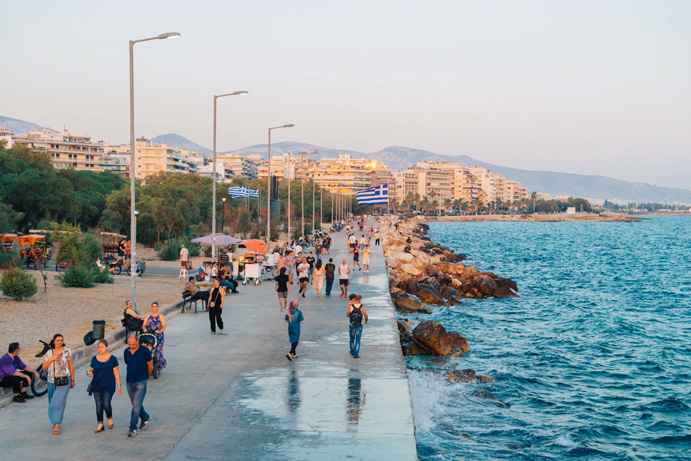
From Hot to Cool
Every day of the year, thousands of visitors come to Athens to take part in the city’s creative history, strolling the open-air museum around the Acropolis or catching sun at the beaches on the Athens Riviera.
Travel to Greece is especially popular during the summer when temperatures are highest, and they’ve been getting hotter over the last century. One hundred years ago, only two summer days reached over 37°C on average each year, while in 2021 there were more than 12 days of extreme heat.
Athens is dense with materials that retain heat and structures covering 80% of land area. This results in “urban heat islands” that leave some neighbourhoods and residents more exposed and vulnerable to everyday and long-lasting high temperatures, and not only during major heat events and fires.
Climate change will impact Athens much more intensively if something is not done fast, and visitors will need to be involved alongside locals in order to make it happen. The city’s new Climate Action Plan calls for a 61% drop in carbon emissions by 2030.
The city is also working to mitigate heat and protect its vulnerable residents by appointing the first municipal Chief Heat Officer in Europe. The post was created to promote projects that will help residents stay cool on the hottest days, and to spark initiatives like the city’s green corridors that can help keep the city cool over the long term.
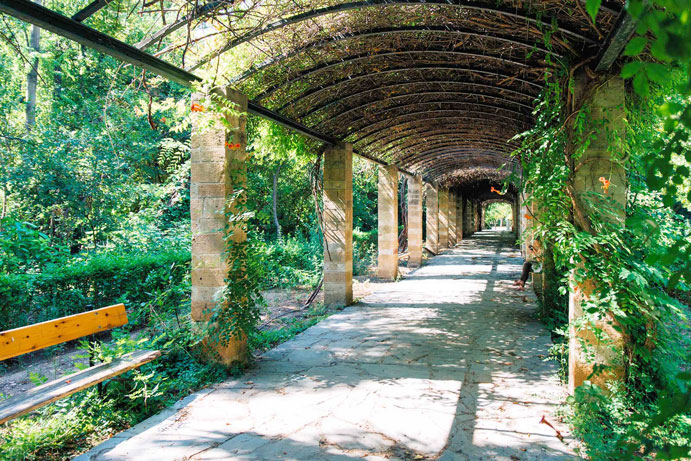
Partnerships for the Future
Athens is at the beginning of a transformation that will help the city meet its sustainable development goals and reduce greenhouse gas emissions.
The key to success is collaborations. ADDMA is helping the city build public-private partnerships that will jointly design and implement projects that contribute to climate action. Public-private partnerships are also helping to drive the tourism industry to become more sustainable and inclusive, and making new opportunities for creative investment in the urban landscape.
For example, the Athens Partnership is a vehicle for private and corporate philanthropy to assist with urban regeneration by contributing to the upgrade of public spaces. Through these initiatives that combine the public interest with private philanthropy, at least 10 pocket parks will have been created before the end of 2021.
Today Athens is one of the leading tourism destinations in Europe because of these efforts to choose its own story. Several years earlier, Athens created This is Athens & Partners, a coalition of major tourism stakeholders promoting conversation between the city, the airport, airlines, hotels, the tourism confederation and investors. The collaboration has helped create a shared communications strategy and promotional campaigns, putting real muscle behind the drive to help Athens become a sustainable city.
Partnerships are also helping to drive the city’s product diversification strategy. The City of Athens joined with the Athens Traders’ Association to promote product diversification and incentives for residents and visitors through the online platform "Athens is Back." Published in Greek and English with more than 1000 offers, the site is a platform for small businesses to help locals get to know their products and services.
ADDMA is working with the Commercial Chambers of Athens to create Agora Athens, a digital shopping guide that will help promote Athens as a shopping destination through suggested routes around the historic centre and by developing knowledge that advances locally-made products.
These partnerships are also creating the Athens Green Business Toolkit to mobilize financing for small businesses to upgrade the appearance and energy efficiency of their storefronts.
Tourism is not only a vehicle for the promotion of a city, it is a method for the transformation of the city. For example, tourism is helping Athens to adopt the UN Sustainable Development Goals through trainings of leaders and stakeholders in best practices for sustainable operations, helping them adapt to new visitor demands and compete for business.
To find out more about what makes Athens the sustainable destination of tomorrow please visit: https://www.thisisathens.org

